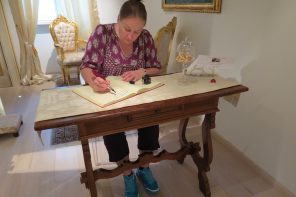Few safari experiences are more rewarding than having a close encounter with a wild animal in its natural habitat. Such sightings are not only rare but hard to come by as well. This makes wildlife watching a tricky affair unless you can manage your expectations and know exactly where to go to improve your chances of spotting your dream species.
We share with you here some of the planet’s most iconic wild creatures and where best you can capture their prized images along the way.
African Bush Elephant, South Africa
Elephants are top of the bucket list for nearly safari enthusiast, however, knowing where to go is the key. Addo Elephant Park in South Africa has one of the densest populations of elephants on earth with an estimated 550 individuals within its 1640 km2 area. There are a number of tented camps and lodges around Addo that add to the fantastic wildlife experience.
To spot elephants, head here in the dry season when large herds converge at the waterholes. The main camp here overlooks a waterhole and has an underground viewing hide from where visitors can get really close views of these gentle giants. You can book your perfect African safari with Naturetrek in order to witness huge herds of African elephants roaming across the savannahs.
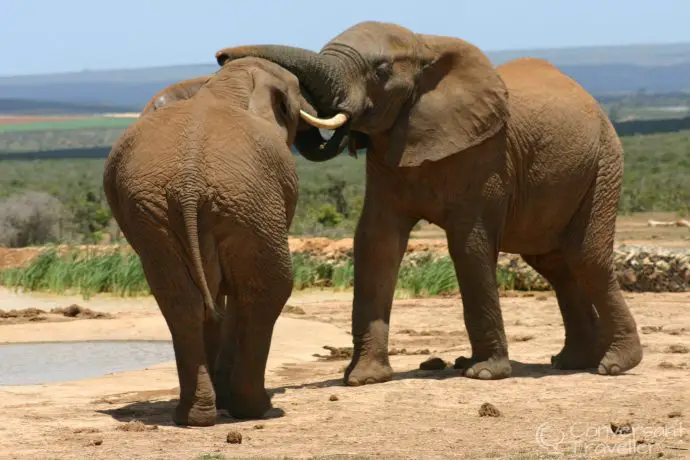
Atlantic Puffin, United States
Atlantic Puffins flock to a seven acre island near the coast of Maine from late April until August to breed. Although puffins are found everywhere from Newfoundland to Iceland, this is historically the southern edge of their breeding range.
The Eastern Egg Rock is the first re-established colony of seabirds and is located roughly six miles from New Harbor, and is one of the most visited islands due to its convenient location near the shore. For those wishing to view puffins in large numbers there are several cruise operators who operate out of Boothbay Harbor. This island has become puffin-friendly mainly because there are terns hovering in the air which provide the puffins cover from predators.
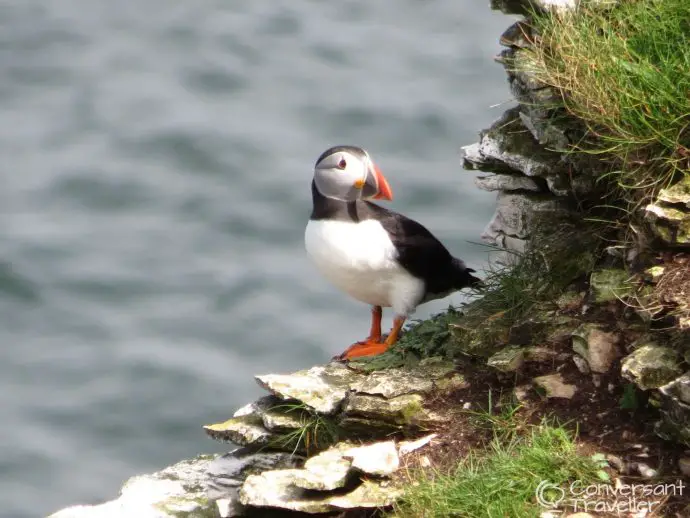
African Lion, Botswana
Botswana is a landlocked country in southern Africa which has adopted a policy of high paying low volume tourism which restricts the number of visitors in all their national parks. At the Selinda Reserve in Botswana, African lions are fascinating to watch, especially when they are about to get ready for a hunt. Today with declining numbers it is indeed a privilege to come across such a magnificent animal in this park with the best viewings between dawn and dusk when these cats spring to life.

Bengal Tiger, India
The Royal Bengal Tiger inhabits a wide range of forests in India but it is the Bandhavgarh National Park of Central India where they have established a sizable base. Although the park occupies an area of 1161 km2, roughly 10% of the area is open for visitors. Getting close to this large hearted animal in its natural habitat is said to be a life-changing moment. With a good population of nearly 80 individuals, tiger sightings in Bandhavgarh are more or less certain. If you can cope with the heat, then the months from April to June make for the best wildlife viewing.
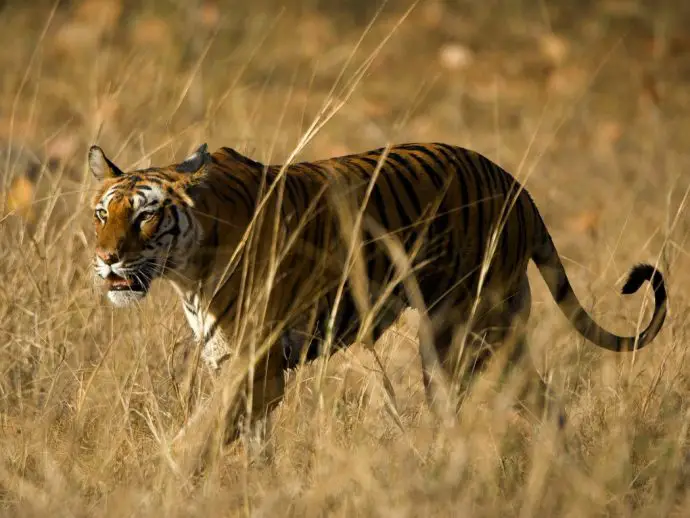
Hippos, Tanzania
Hippos are found all over Tanzania from the Karavi National Park to the rivers and wetlands of Tarangire. However, the best sightings can be enjoyed on the wide Rufiji River which passes through the Selous Game Reserve where they lurk in the lakes and channels that drain into it. All the resorts and camps offer boat trips which allow for close up views.
In some camps you can even hear them snorting in the shallows from within the tents. Pods of several hundreds are known to congregate here on the tiny waterholes during the dry season.
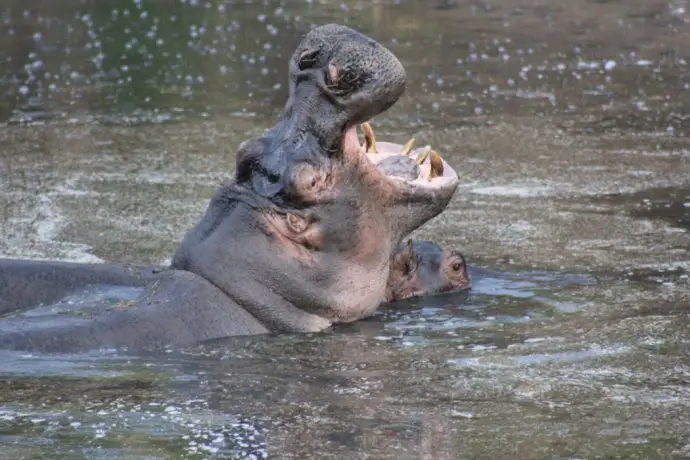
Rhino, Namibia
There is something about this powerful prehistoric beast that fascinates almost everybody. Their massive size and armour-like skin sets them apart from other African wildlife. The dinosaurs have been long extinct and the rhinos are sadly also approaching the same fate. Sincere efforts in Rhino conservation have relocated these vulnerable animals to dedicated parks in order to protect them and encourage them to breed.
The world’s largest free roaming population of the black rhino can be found in the 5000 km2 Desert Rhino Camp located between the Skeleton Coast and Etosha National Park in Namibia. And in fact Namibia is home to around a third of Africa’s black rhino population so it’s a great place to visit if you want to tick this majestic creature off your list.

Polar Bear, Canada
The only bear which relies on the marine environment for survival is the polar bear. It is the largest land carnivore of North America and is found in many places across Canada but notably in Churchill, Manitoba, which is said to be the polar capital of the world. Over 1200 animals have been recorded to migrate from inland to the shores of Hudson Bay and Churchill. There is only a brief ninety day window from October to mid November to see them as they migrate back as soon as the ice becomes sturdy enough over the Hudson Bay. Trained professionals in enclosed Tundra Buggies can take visitors for a close view of these large predators.

Mountain Gorilla, Rwanda
Nearly half of the surviving population in the world of mountain gorillas can be found in the Virunga Mountains, a range of extinct volcanoes found in Rwanda at elevations ranging from 8000 to 13000 feet. To reach them is not easy and involves an arduous gorilla trek over uneven terrain for up to eight hours through thick jungle vegetation. Visitors should be physically fit and be prepared for many hours of walking and be ready to shell out 1500$ for just an hour with these great apes. However, the expense and effort is well worth it! This is one safari which brings you up close and personal with one of nature’s most iconic species. The mountain gorillas of Rwanda share 98% of our DNA and it is like looking into a mirror as they impassively look back.

Leopard, Sri Lanka
The 950 square kilometres Yala National Park in Sri Lanka holds a good number of around 40 leopards and is one of the top spots to visit in Sri lanka. In spite of such a dense population, sightings of these elusive creatures is not at all easy. The Sri Lankan leopard is the apex predator on the island and is catching a glimpse of one is popular among locals as well as visitors. There are around 1000 numbers left in the wild and the subspecies found here is an endemic one, found nowhere else in the world. The habitat of Yala is quite diverse from rocky outcrops to freshwater lakes which has created a popular destination to spot this cat lounging on the huge granite boulders which are dotted around the park. Combine a trip here with a stop on the south coast to go whale watching in Mirissa for the ultimate wildlife holiday.

Great White Shark, United States
The largest, and possibly the most misunderstood fish in the world, the Great White Shark is capable of eating marine animals weighing hundreds of pounds. Reaching a length of 20 feet, the body of the Great White is adapted for predation. Only a short boat ride away from San Francisco, the Farallon Islands are the only place in the US where you can scuba dive with the Great Whites from September to November.



